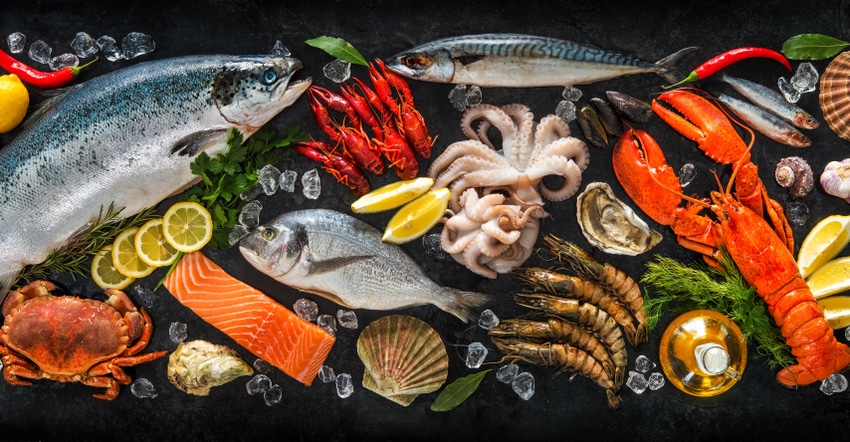Reliable, responsible astaxanthin suppliers take quality, purity and sustainability seriously.

The health benefits of astaxanthin have become more widely known, drawing attention from manufacturers and consumers. Understanding how astaxanthin is produced can help buyers choose the right supply partners to provide high-quality products to consumers.
An Antioxidant Powerhouse
Astaxanthin’s healthy reputation stems from its superb antioxidant properties. It is 6,000 times more potent than vitamin C, 100 times more potent than vitamin E and five times more potent than beta-carotene in its ability to trap energy from singlet oxygen (Carotenoid Science. 2017;11:16-20. Nutrafoods. 2013;12:145-52.). Therefore, other antioxidants are required at a higher dosage per serving to provide similar benefits.
The numerous health benefits of natural astaxanthin for brain health, eye health, healthy aging, cardiovascular health, muscle endurance/recovery and skin health are supported by extensive research, including more than 50 human clinical studies and 1,400 peer-reviewed scientific papers.
Although astaxanthin can be found in aquatic animals and produced synthetically from petrochemicals, the best source of astaxanthin for dietary supplements is the Haematococcus pluvialis microalgae due to its high astaxanthin content and proven safety.
Cultivation Methods
pluvialis can be cultivated in numerous ways, such as open ponds, plastic bags or photobioreactor (PBR) systems. Although open ponds are inexpensive to build, they have been associated with contamination issues, and excessive space and water requirements. Enclosed PBR systems, on the other hand, have been shown to protect the culture from external contamination and enable optimal growth of the microalgae, continuous cultivation and high yields of pure astaxanthin.
Moreover, PBR systems are modular. Each PBR system has a finite maximum volume, which is set for optimum cultivation parameters. This modular scalability has the added benefit of increased quality control and quicker response times, ensuring a steady production output.
Three-Step Production Process
Microalgae cultivation is a highly technical process. Sourcing high-quality astaxanthin from H. pluvialis at a commercial scale involves three key phases:
Green Phase—Algae cells are cultivated under optimal growth conditions using pure water and high-quality nutrients to make the algae grow and multiply.
Starvation Phase—The algae culture is exposed to stress conditions to induce astaxanthin accumulation.
Red Phase—At the end of the red phase, the algae culture is harvested for downstream processing. The algal biomass is dehydrated, and the algal cells are cracked. Astaxanthin is recovered using solvent-free supercritical CO2 extraction and standardized to produce astaxanthin oleoresin.
Purity
As the primary input for microalgae cultivation, the importance of water purity cannot be overstated. Due to the high biosorption capabilities of microalgae, any trace amount of heavy metals or other contaminants present in the water will accumulate and magnify in microalgae cultures. Due to human activities, heavy metal concentrations in water exceed maximum permitted levels in many parts of the world. Therefore, it is essential for astaxanthin manufacturers to secure access to the cleanest water resources and ensure their products are strictly and routinely monitored for heavy metals and other contaminants.
Sustainability
Algae is regarded as more sustainable than conventional crops because it requires little input to live. However, algae cultivation, depending on the setup, can require substantial amounts of water and energy. Therefore, conservation techniques should be in place to address both water needs and energy requirements.
Delivery Methods
Astaxanthin is lipid-soluble and does not mix well with hydrophilic products. By nature, astaxanthin is susceptible to degradation under elevated temperatures and exposure to light, which limits its usage in baked goods and beverages. Consequently, dietary supplements in the form of hard- and soft-gelatin capsules are the best delivery systems of natural astaxanthin.
The natural products industry continues to move toward greater transparency in manufacturing practices, sustainability and country of origin. Well-informed consumers also actively look for transparency when making purchasing decisions. Reliable, responsible astaxanthin suppliers take quality, purity and sustainability seriously.
Tryggvi has a Ph.D. in microbiology and genetics from ETH Zurich in Switzerland. He joined Algalif in early 2014 and, since 2015, has led the company’s research and development (R&D) and scale-up department as Science Manager. Among other things, Tryggvi’s department oversees the continuous optimization of cultivation parameters.
About the Author(s)
You May Also Like






.png?width=800&auto=webp&quality=80&disable=upscale)